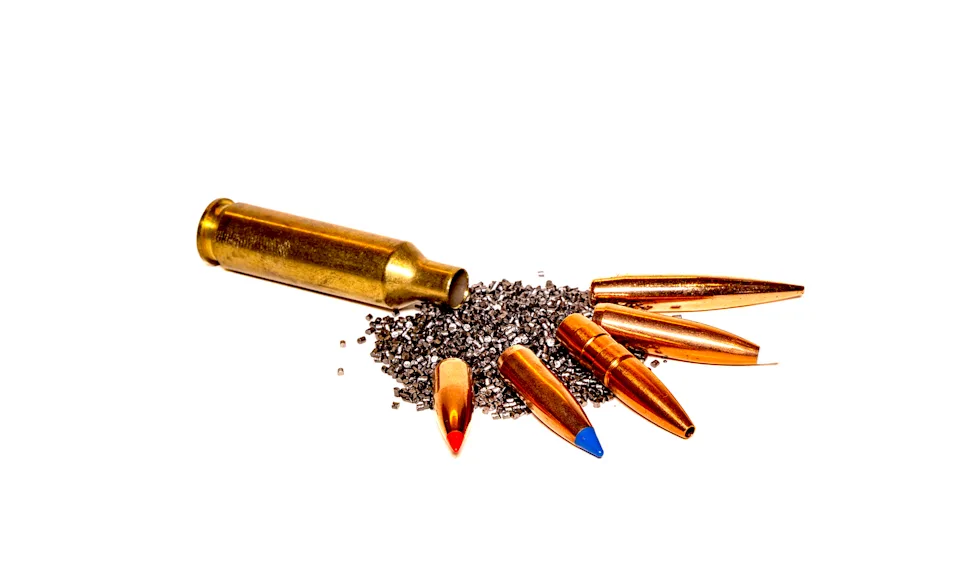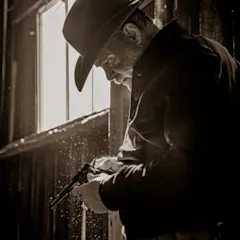In 2015, I decided to neck the 6.5 Creedmoor case down to 0.257-caliber. With help of two fellow West Virginians, Mike Cyrus of Lehigh Defense and Jerry Dove of Dove Custom guns, I was soon shooting the wildcat cartridge I called the “2Fity-Hillbilly.” I tried to get Hornady to legitimize the cartridge at the time, but their focus back then was on the 6mm Creedmoor. Now, a decade after I started messing with it, the Sporting Arms and Ammunition Manufactuerer’s Institute (SAAMI) has approved the 25 Creedmoor, and Hornady has introduced two factory loads for it. The question you might be asking is, why?
Many will argue that we already have plenty, if not too many, centerfire rifle cartridges to choose from. So why should anyone give a damn about another one—especially one in .25-caliber? To answer this question, it helps to look at the history of .25-caliber cartridges, with an understanding of what most hunters wanted when these offerings were introduced. Instead of several hunting rifles, hunters wanted one rifle that would allow them to do the most things. Coast to coast, for most hunters, this meant a rifle for varmints, predators, and deer—and a host of 25-caliber cartridges were introduced with that in mind.
A Short History of the Best .25-Caliber Cartridges
250 Savage

In 1916, Savage introduced the 250 Savage, also known as the 250-3000. This was the first American centerfire rifle cartridge to break the 3000-fps mark. Deer hunters loved it, especially with 100-grain bullets at about 2850 fps. But the reason they loved it wasn't just because it was great at killing deer, but because with lighter and faster 87-grain bullets, it was also death on varmints and predators. The 250 Savage gave hunters one rifle they could effectively use for varmints and deer. However, in short order, a 100-grain bullet at 2850 fps was just not fast enough.
257 Roberts

In the late 1920s, gunwriter Ned Roberts necked the 7x57 Mauser cartridge case down to 0.257-caliber, specifically for long-range varmint hunting. He called it the 257 Roberts. The Roberts was even faster than the 250 Savage, pushing a 100-grain bullet to around 3000 fps. Remington standardized it in 1934 but screwed it up by underloading the cartridge and offering it with a 117-grain round nose bullet. Still, the “Bob,” as hunters often call the 257 Roberts, has remained popular. It has refused to go away because it’s so effective—especially when handloaded—as a dual purpose deer and varmint cartridge, with bullets as light as 70 grains and has heavy as 117.
257 Weatherby Magnum

Building on the success of the 250 Savage and 257 Roberts, Roy Weatherby introduced the 257 Weatherby Magnum in 1944. It rocked the gun world by pushing a 100-grian bullet to about 3600 fps. This cartridge enjoyed an intense following for a while, but most hunters who wanted that dual-purpose (light and heavy bullet/varmint and deer cartridge) application found the muzzle blast and recoil of Roy’s Magnum a tad unsettling. You could say the 257 Weatherby Magnum was just too much of a good thing.
25-06 Remington

When Remington brought out their 25-06 in 1969, it looked like we might get the .25-caliber cartridge everyone wanted. By necking down the 30-06 case to accept a .25-caliber bullet, Remington created a cartridge that would push a 100-grain bullet to around 3200 fps. The 25-06 Remington enjoyed some popularity, but Reminton introduced it at about the same time American hunters were beginning to specialize their rifles. Instead of wanting one rifle for varmints, predators, deer, and an occasional elk, hunters were starting to want a separate rifle for each pursuit. More affordable rifles were making this more practical, and the dual-purpose cartridge began to lose appeal. The 25-06 reached its zenith of popularity before the turn of the century.
Nothing Has Changed—and Everything Has Changed
In the new millennium, deer, varmint, and predator hunting are still the most popular types of hunting Americans engage in. But for about a decade now, hunters have become more interested in long-range hunting and even competitive and recreational long-range shooting. American hunters are also spending more money on their rifles, so they can shoot better up close and at distance. The table has been perfectly set for a single cartridge that can do all those things and allow American hunters to buy one rifle—one very nice rifle—that can serve not just a double, but a triple purpose.
6.5 and 6mm Creedmoor
You could argue that the first two Creedmoor cartridges, the 6.5 Creedmoor and 6mm Creedmoor, already fill this niche. But the truth is that while both are ideal for long-range shooting, bullet weight hinders both (in different ways) when it comes to hunting. In 6mm, bullets range in weight from around 55 to 110 grains, and in 6.5mm your bullet weight options run from around 90 to around 140 grains. This is why back in the one-rifle days, the quarter bore cartridges were so popular, and with modern bullets they are even better now. In .257-caliber, bullets now range in weight from 70 grains up to 138 grains. It’s a perfect array of projectiles for varmints, predators, deer, that occasional elk, along with all the long-range shooting you can stand to do.
Why the 25 Creedmoor Is the Best

I’ve been handloading for the 25 Creedmoor for a decade, and I have a great understanding and appreciation of its capabilities. It’ll launch a 100-grain bullet at 3200 fps, but on a coyote hunt in Wyoming, I piled the bed of a pickup truck full using 75-grain Hornady V-Max bullets at nearly 3600 fps. In Nebraska, with a 110-grain Hornady ELD-X bullet at almost 3100 fps, I took my best whitetail at about 150 yards. Then I took a doe out beyond 300 yards. There have been other kills along with some distance competition, and it’s proved to me that the 25 Creedmoor epitomizes the original concept of a dual-purpose—and now triple-purpose—rifle. With modern high-ballistic-coefficient (BC) bullets, like the 0.350 G7 BC, 138-grain Hornady A-Tip Match or the 0.334 G7 BC Berger Hybrid Target bullet, at distance the 25 Creedmoor will outperform the 6mm Creedmoor and hang right with the 6.5 Creed.

Practically speaking, the 25 Creedmoor perhaps should have been the first Creedmoor. Maybe not for long-range practitioners because only recently have we seen the high-BC .257-caliber bullets. But damn sure for hunters, because we’ve always had a great selection of varmint, predator, and big-game bullets in .25-caliber. Any hunter over the age of 40 already knows this. Maybe we are all too ingrained in the notion that we need a specialized rifle for every different thing we hunt or shoot to really appreciate the fact we can now do most anything with a single rifle and cartridge.
One Tack-DrivingRifle to Do It All

There is a distinct allure to having a separate rifle for everything, but it’s damned hard to justify the cost, especially if you’re only going to use it for one thing. Instead of having several moderately expensive rifles, you could just have one very nice, expensive rifle. A rifle like the Proof Research Glacier Ti in 25 Creedmoor that I’ve been testing is a perfect example. Its price tag will make your knees weak, but it’s a hell of a tack-driver. But if you like to hunt varmints, predators, deer, an occasional elk, and like to play at extreme range, it is the only rifle you’d ever need. An expensive rifle does not sound as bad if it is ideally adapted to everything you want to shoot at. Like the old saying goes, beware the man with one rifle because he’ll know how to use it.
What does the future hold for the 25 Creedmoor? Hornady didn’t take my advice 10 years ago, but I hope some top shelf rifle manufacturers like Christensen Arms, Wilson Combat, and Q, are listening and get behind the 25 Creedmoor. It would also be great if more affordable rifles from companies like Ruger and Mossberg became available in 25 Creedmoor too. Either way, the triple threat is finally here.


